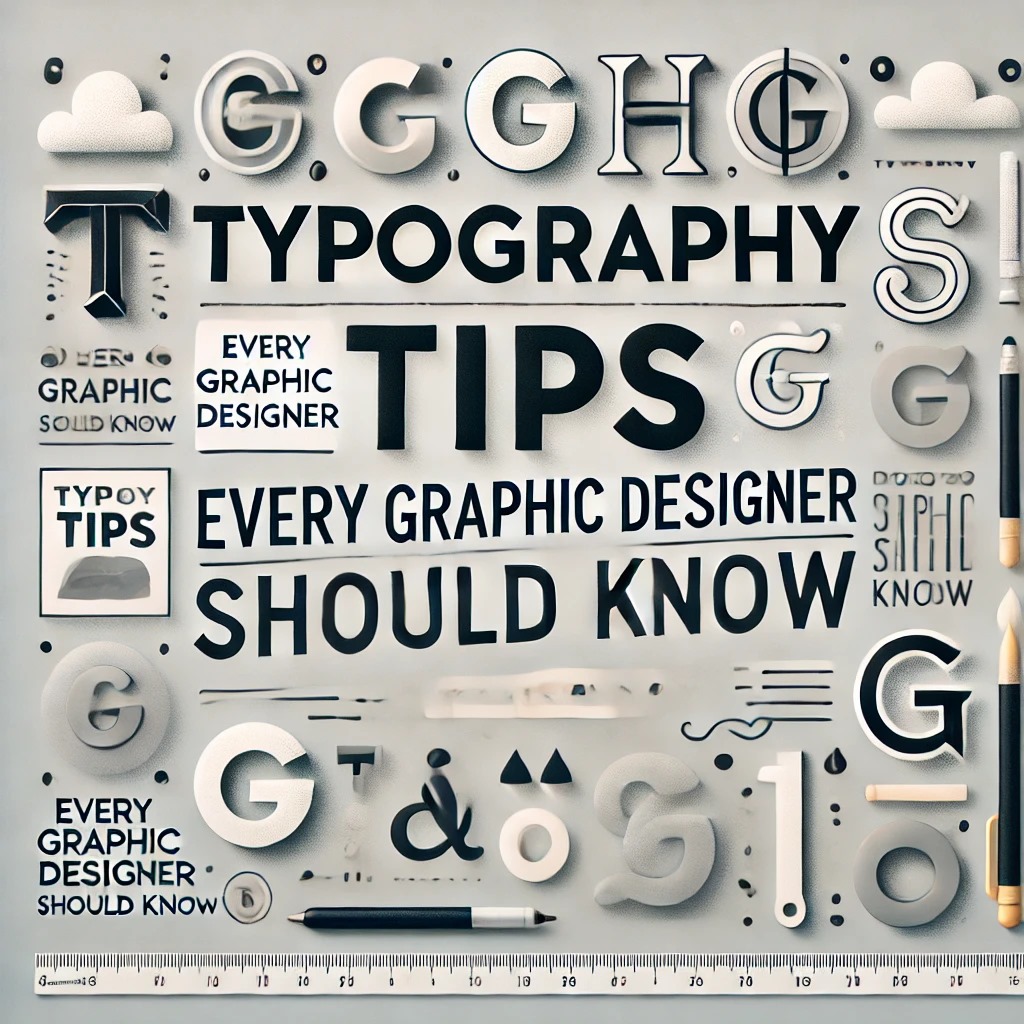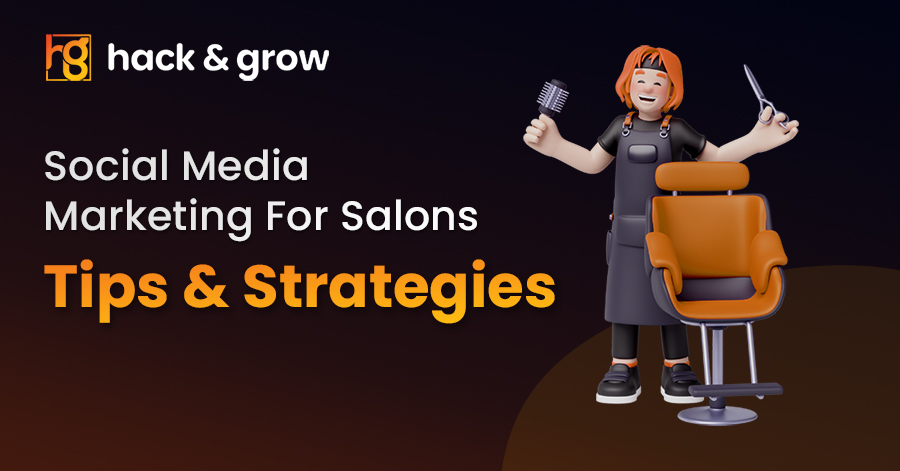Typography is at the core of every graphic designer’s toolkit. From logo creation to website design, choosing the right fonts can be a game-changer. Whether you’re designing a sleek website or working on an innovative logo design, understanding the importance of typography in design is critical. Let’s explore some essential typography tips every graphic designer should know to create visually engaging designs that communicate effectively.
Understanding the Importance of Typography in Design
Before diving into tips, it’s crucial to understand the importance of typography in design. Typography is more than just arranging letters; it’s about conveying a mood, evoking emotion, and guiding users through a design seamlessly.
Typography helps:
- Establish a hierarchy: Well-chosen fonts lead the viewer’s eye through the design in a structured manner.
- Enhance readability: Clear typography ensures the message is easily understood.
- Communicate brand identity: The right typography can evoke brand personality and make it memorable.
How to Choose Fonts for Design: Key Considerations
Choosing the perfect font can seem daunting, especially when there are thousands of options available. Here are a few factors to consider when deciding how to choose fonts for design.

1. Match the Font with the Brand Personality
Your font should match the brand or message you are conveying. For instance, a modern, tech-savvy company might opt for clean, sans-serif fonts like Helvetica or Arial, while a vintage clothing store might prefer decorative or serif fonts to communicate nostalgia.
2. Consider Font Pairing
Pairing fonts can give your design an edge. Use contrasting fonts, such as pairing a serif with a sans-serif, to create visual interest. When it comes to design contrast helps create a visual hierarchy that guides the viewer’s eye through your content.
3. Readability is Key
While decorative fonts may seem appealing, always prioritize readability. Users should be able to read the text effortlessly without strain. For large bodies of text, stick to fonts that are legible at various sizes.
Key Typography Tips for Logo Design Typography
Creating a logo requires balancing creativity with practicality. Logo design typography plays a significant role in establishing a brand’s identity. Here’s what every designer should keep in mind when using typography in logos.
1. Simplicity is Everything
In logo design, simplicity is critical. Avoid overly complex fonts that might be hard to read or reproduce at smaller sizes. Clean, minimalistic fonts often work best, ensuring the logo remains timeless.
2. Avoid Trendy Fonts
While it may be tempting to use a trendy font, logos are meant to be evergreen. Trends fade, but a logo with a classic or custom-designed font will stand the test of time. Ensure the typography is both distinctive and flexible enough to evolve with the brand.
3. Custom Fonts for Uniqueness
Using custom fonts in your logo can set a brand apart. Designing a font or customizing an existing one can give the logo a unique feel that competitors won’t easily replicate.
Best Practices in Design Typography
When it comes to design small changes can make a big impact on the final product. Here are a few typography tips every graphic designer should incorporate into their workflow.
1. Use a Limited Number of Fonts
A common rookie mistake is using too many fonts in a single design. Stick to two or three fonts—one for headers, one for body text, and potentially one for accents. This maintains consistency and ensures a clean, professional look.
2. Mind Your Spacing
Kerning (the space between letters), leading (the space between lines), and tracking (the overall spacing of text) are critical elements in typography. Adjust these carefully to improve readability and visual appeal. Good spacing gives your design breathing room and makes it easier for viewers to consume your content.
3. Emphasize with Font Weights and Styles
Instead of adding more fonts, use different weights and styles (bold, italic, etc.) within a single typeface to create emphasis. This helps you draw attention to important parts of your text without cluttering the design.
4. Align Text Properly
Alignment is a foundational principle of graphic designing fonts. Left-aligned text is the easiest to read, making it ideal for long-form content. For shorter text blocks or headers, center or right alignment can add a creative touch. Always ensure that your text aligns with other design elements to maintain balance and order.
The Role of Typography in Web and Digital Design
When it comes to web or mobile design, design typography must adapt to various screen sizes and resolutions. As more users access content on smartphones and tablets, it’s essential to optimize fonts for legibility across all devices.
1. Optimize for Mobile
Fonts that look perfect on desktop might not translate well to mobile screens. Ensure that your typography is responsive and resizes correctly across different devices without losing legibility.
2. Use Web-Safe Fonts
For web projects, stick to web-safe fonts that are widely supported across different browsers. This ensures consistency, regardless of the user’s platform. Fonts like Arial, Verdana, and Georgia are reliable choices, but using web fonts like Google Fonts also gives you more flexibility while keeping your design accessible.
3. Accessibility Matters
Inclusive design is not a choice but a necessity. Ensure your typography choices consider accessibility—use sufficient contrast between text and background and make sure font sizes are adjustable.
How Typography Impacts User Experience (UX)
Typography doesn’t just make designs look good—it plays a vital role in user experience. Clear, well-structured While poorly designed typography can lead to frustration and confusion, it can also help people navigate a website.. Here’s how to make sure your typography enhances the user experience.
1. Prioritize Hierarchy
Use fonts and font sizes to create a hierarchy in your design. For instance, headings should be larger and bolder to stand out, while body text should be smaller and easily readable. Subheadings, bulleted lists, and captions all help in structuring information and guiding the user smoothly through the content.
2. Create Visual Consistency
Consistency is key in UX design. Stick to a consistent set of fonts across all web pages or designs to ensure users don’t feel disoriented. Regular typeface fosters familiarity and facilitates intuitive navigation.
3. Focus on Line Length and Spacing
Line length is the number of characters per line in a body of text. Ideally, aim for 50-75 characters per line to enhance readability. Adjust the line spacing (leading) to provide breathing room and make your content easier on the eyes.
Typography Tools Every Designer Should Try
Several tools are available to help designers perfect their typography choices. The following are a few that will ease your life:
1. Adobe Fonts:
Adobe’s font library offers an extensive selection of high-quality fonts.
2. Google Fonts:
A free resource with hundreds of web-safe fonts.
3. WhatTheFont:
This application allows you to upload a picture and determines the typeface used in the layout.
These tools allow you to experiment with different fonts for graphic designing without committing to a final choice until you’ve tested various combinations.
Final Thoughts on Typography Tips for Graphic Designers
Typography is an essential skill in any graphic designer’s toolbox. Whether you’re working on logo design typography, building a website, or creating marketing materials, understanding how to choose fonts for design and applying these typography tips will elevate your work. With attention to detail in design typography and thoughtful consideration of user experience, typography can transform your designs into compelling visual experiences.






